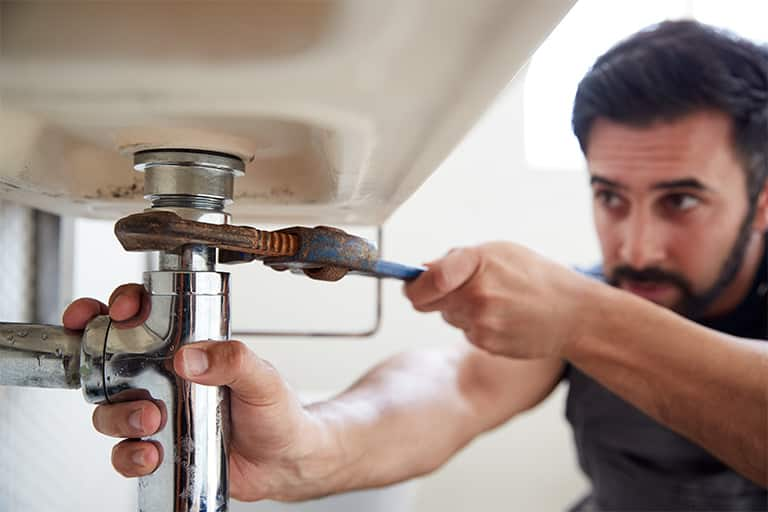The publisher is making several great points on the subject of Locating water leaks in general in the article underneath.

Early detection of dripping water lines can alleviate a potential disaster. Some small water leakages may not be visible.
1. Take A Look At the Water Meter
Checking it is a surefire means that aids you uncover leaks. If it moves, that indicates a fast-moving leakage. This means you may have a slow-moving leak that might also be below ground.
2. Check Water Usage
If you find unexpected changes, in spite of your intake being the very same, it means that you have leakages in your plumbing system. An abrupt spike in your costs indicates a fast-moving leak.
At the same time, a steady increase monthly, despite the very same behaviors, shows you have a slow leakage that's likewise slowly rising. Call a plumber to extensively inspect your residential property, especially if you feel a warm area on your flooring with piping beneath.
3. Do a Food Coloring Test
When it comes to water intake, 30% comes from bathrooms. If the color in some way infiltrates your bowl throughout that time without flushing, there's a leak in between the tank and also bowl.
4. Asses Exterior Lines
Don't forget to examine your outside water lines as well. Test faucets by connecting a garden hose pipe. Ought to water leak out of the connection, you have a loosened rubber gasket. Change this and also ensure all links are tight. If you have actually obtained a sprinkler system, it will aid get it expertly checked out and maintained yearly. One tiny leak can waste tons of water and surge your water expense.
5. Evaluate as well as Analyze the Situation
House owners need to make it a habit to inspect under the sink counters as well as even inside cabinets for any kind of bad odor or mold growth. These two red flags show a leakage so timely attention is needed. Doing routine examinations, even bi-annually, can save you from a major problem.
A lot more significantly, if you understand your house is already old, maintain a watchful eye on your heating systems, hose pipes, pipes etc. Check for stainings and compromising as most pipelines as well as appliances have a life expectancy. They will certainly also normally degrade due to tear and also use. If you believe leaking water lines in your plumbing system, don't await it to intensify. Call a professional plumber as soon as possible so you don't wind up with an awful mess in your home.
Early detection of dripping water lines can mitigate a prospective catastrophe. Some small water leakages may not be visible. Examining it is a proven way that assists you discover leaks. One tiny leakage can lose heaps of water and surge your water bill.
If you think dripping water lines in your plumbing system, do not wait for it to intensify.
How to Know If Your Home Has a Hidden Leak
Water Meter Reveals Inexplicable Water Usage
If you’d like to test whether or not there’s a leak somewhere in your home, you can do this using your water meter. Here is how to conduct the test:
Don’t use any water in your home for at least 30 minutes; this also means not turning on faucets or water-using appliances.
Go outside, and check your water meter for activity.
If your water meter shows that there was activity, even though no one was using any water, this proves that there is a leak in your home.Visible Mold or Mildew Growth
Leaks behind walls create moist, dark environments that allow mold and mildew to grow and thrive. Eventually, you might see mold growth forming on the wall closest to a hidden leak.
If mold is growing in an area that receives a high amount of moisture, such as a bathroom, it may simply be an indication that better ventilation is needed. However, if you see mold growth on a wall or the ceiling in an area where you would not expect, you probably have a hidden leak.
Musty, Mildew Odor
Sometimes you might not be able to see the mold or mildew that is growing as a result of a leak. However, the smell can give the problem away just as easily. If you catch a whiff of something musty, there’s a good chance that old water is collecting somewhere in your home that you can’t see.
Stained/Warped Walls, Ceilings, or Floors
When your home soaks up water, a variety of red flags can become visible, including ceiling stains, bubbling drywall, warped walls, and sagging floors. While these issues can be caused by excess humidity, they can also be signs that a pipe or plumbing connection has started leaking behind your walls.
Inexplicably High Water Bill
After a while, you get a general sense for what your water bill should be. If you own a pool or sprinkler system, your bill will tend to be higher during summer. However, if you receive a water bill that seems especially high, and you can’t figure out what caused it, then you may have a hidden leak somewhere that’s increasing your bill.
https://www.plumbingjoint.com/blog/2019/july/how-to-know-if-your-home-has-a-hidden-leak/

Hopefully you liked our excerpt about Finding hidden leaks. Thank you for taking a few minutes to read through our piece of content. Kindly take the time to promote this article if you enjoyed it. I appreciate reading our article about Top leak detection hacks.
Rely on our emergency expertise.